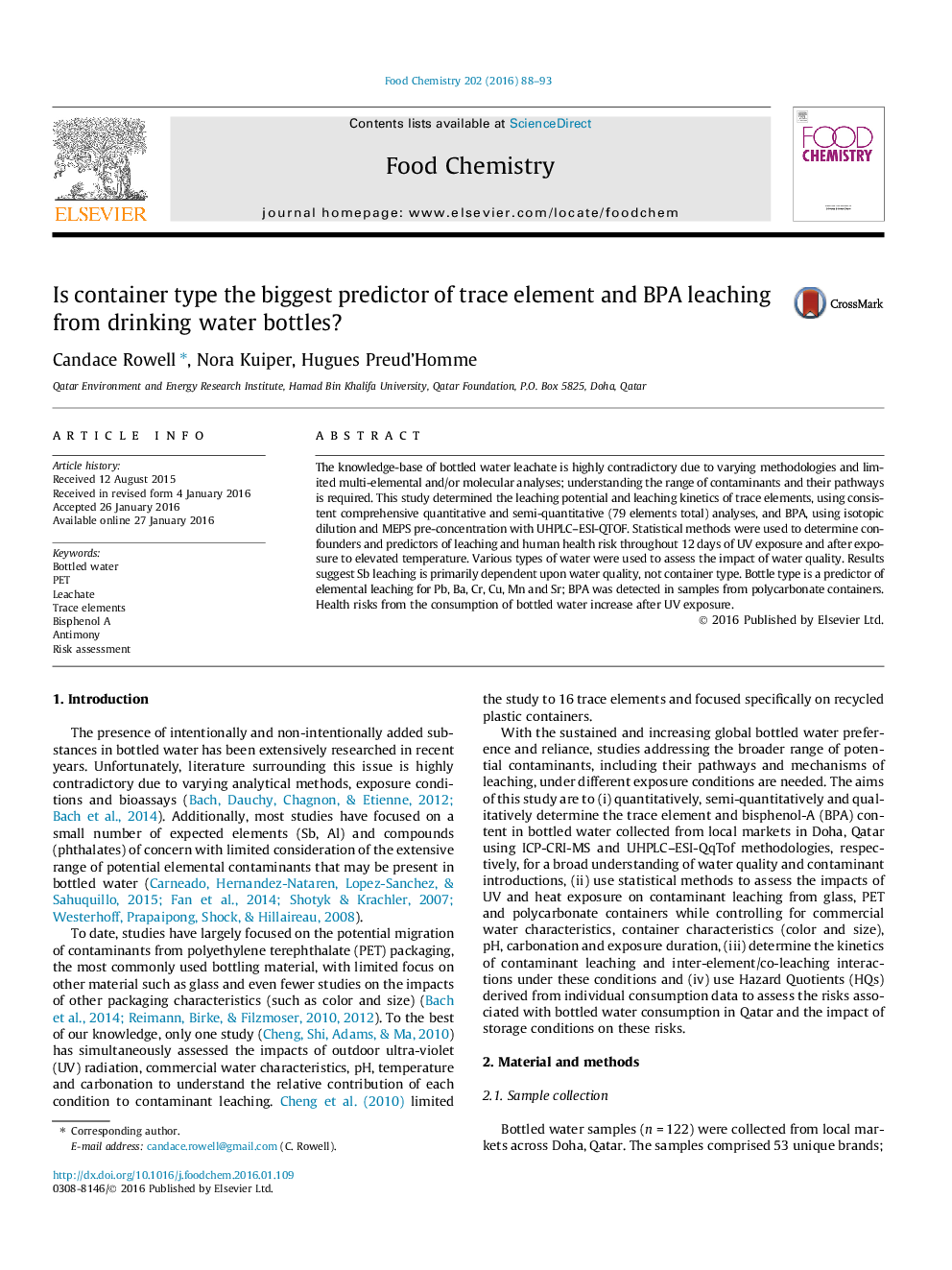| Article ID | Journal | Published Year | Pages | File Type |
|---|---|---|---|---|
| 7588972 | Food Chemistry | 2016 | 6 Pages |
Abstract
The knowledge-base of bottled water leachate is highly contradictory due to varying methodologies and limited multi-elemental and/or molecular analyses; understanding the range of contaminants and their pathways is required. This study determined the leaching potential and leaching kinetics of trace elements, using consistent comprehensive quantitative and semi-quantitative (79 elements total) analyses, and BPA, using isotopic dilution and MEPS pre-concentration with UHPLC-ESI-QTOF. Statistical methods were used to determine confounders and predictors of leaching and human health risk throughout 12Â days of UV exposure and after exposure to elevated temperature. Various types of water were used to assess the impact of water quality. Results suggest Sb leaching is primarily dependent upon water quality, not container type. Bottle type is a predictor of elemental leaching for Pb, Ba, Cr, Cu, Mn and Sr; BPA was detected in samples from polycarbonate containers. Health risks from the consumption of bottled water increase after UV exposure.
Related Topics
Physical Sciences and Engineering
Chemistry
Analytical Chemistry
Authors
Candace Rowell, Nora Kuiper, Hugues Preud'Homme,
